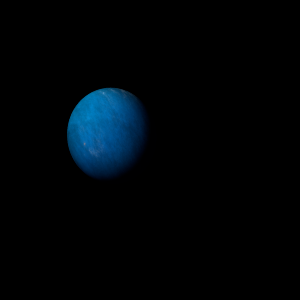|
|
Space Astro
|
Info for exoplanet "Kagala-theltar"
| Scientific (actual) data |
|---|
| Name | Kepler-126 c |
| Planet status | Confirmed |
| Radius | 0.141 |
| Orbital period | 21.8697 |
| Semi major axis | 0.162 |
| Orbit eccentricity | 0.19 |
| Discovered | 2014 |
| Updated | 2021-02-05 |
| Tconj | 2454970 |
| Impact parameter | 0.71 |
| Publication | Announced on a website |
| Detection type | Primary Transit |
| Alternate names | 2MASS J19172334+4412307 c, K00260.03, KIC 8292840 c, KOI-260 c, KOI-260.03, WISE J191723.36+441230.5 c |
| Star name | Kepler-126 |
| Right ascension | 289.35° |
| Declination | 44.21° |
| Mag j | 9.616 |
| Mag h | 9.407 |
| Mag k | 9.344 |
| Star distance | 239.03 |
| Star radius | 1.36 |
| Star temperature | 6239 |
| Star alternate names | 2MASS J19172334+4412307, KIC 8292840, KOI-260, WISE J191723.36+441230.5 |
| Wikipedia article | Kepler-126 c |
Back
| |
| Fictional info (?) |
|---|
| Suggested name | Kagala-theltar |
| Planet type | Planet |
| The planet telescopically displays the complete range of phases, similar to Venus and the Moon, as it moves in its inner orbit relative to Kepler-126, which reoccurs over the so-called synodic period approximately every 174 days.
The outer atmosphere is visibly segregated into several bands at different latitudes, resulting in turbulence and storms along their interacting boundaries. |
| Atmosphere | Ammonia | 69% |
| Sulfur dioxide | 22% |
| Argon | 6.6% |
| Methane | 1.3% |
| Carbon dioxide | 1.1% |
| Atmospheric pressure | 8 bar |
 |
| Moon | Ladetithe | Very small potato shaped gaseous comet |
| Hyskoll | Huge potato shaped rocky asteroid |
| Lene | Small round rocky asteroid |
| Nomiasut | Small round rocky comet |
| Legir | Very small slightly egg-shaped crater-filled moon |
| Teastome | Medium-sized potato shaped rocky planetoid |
| Kivi Car | Medium-sized irregular rocky comet |
| Tedome | Very small almost round crater-filled planetoid |
| Drabos | Very small slightly egg-shaped oceanic comet |
| Proti Hesete Ton | Huge slightly egg-shaped crater-filled planetoid |
| Bauti | Small almost round crater-filled planetoid |
| Qeqsete Iaka | Large irregular ice asteroid |
| Nomia Hitoia | Very small almost round crater-filled asteroid |
| Name-auto Noti Liaq | Small irregular gaseous planetoid |
| Prohe Uqri-mepan | Large round crater-filled moon |
| Thigel-stoone'lao | Medium-sized irregular gaseous moon |
| Gedaph | Medium-sized round ice moon |
| Google search for Kagala-theltar |
|
Website by Joachim Michaelis
|
|
|
|